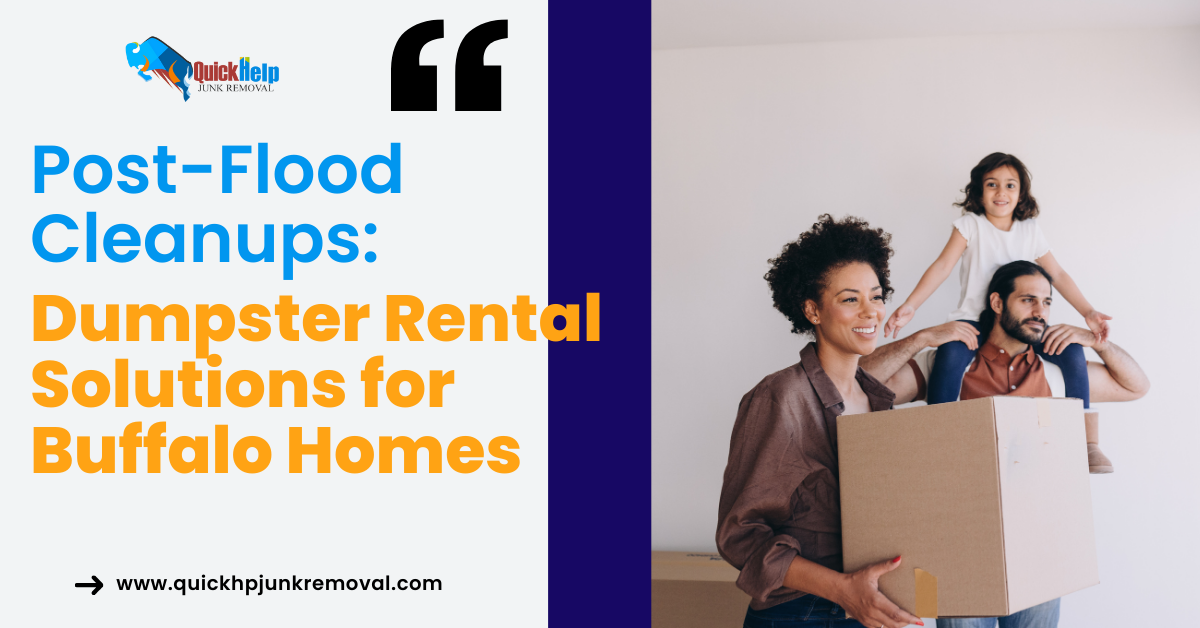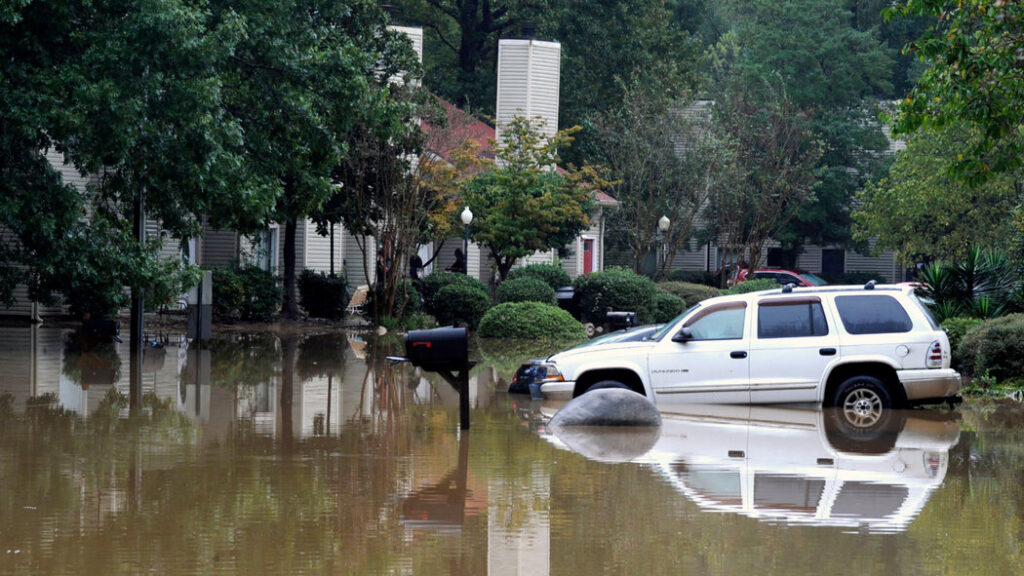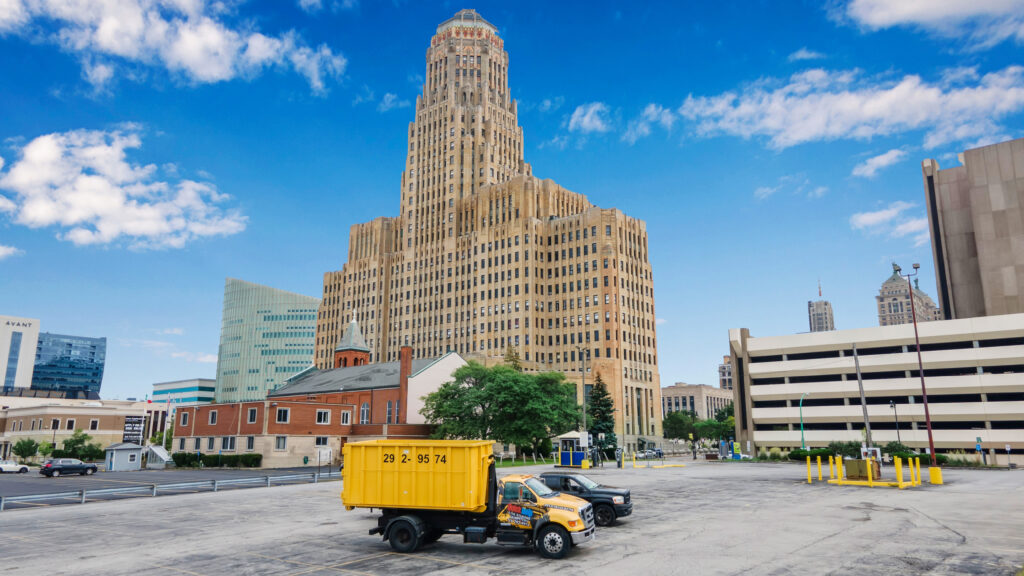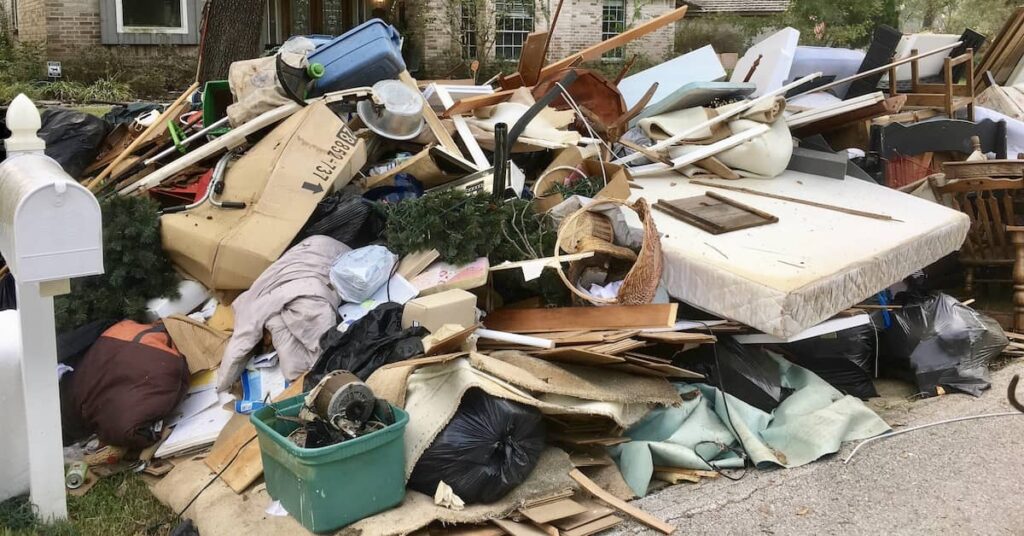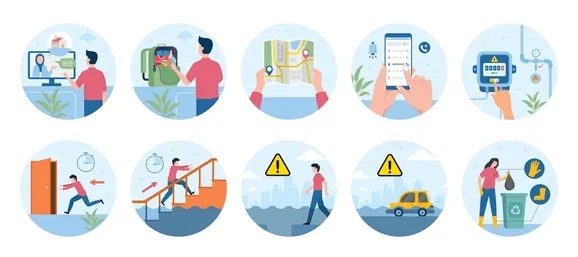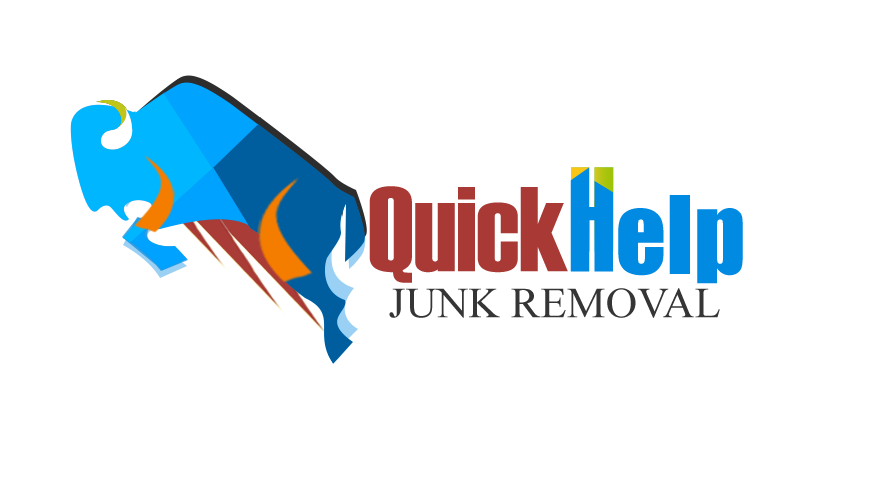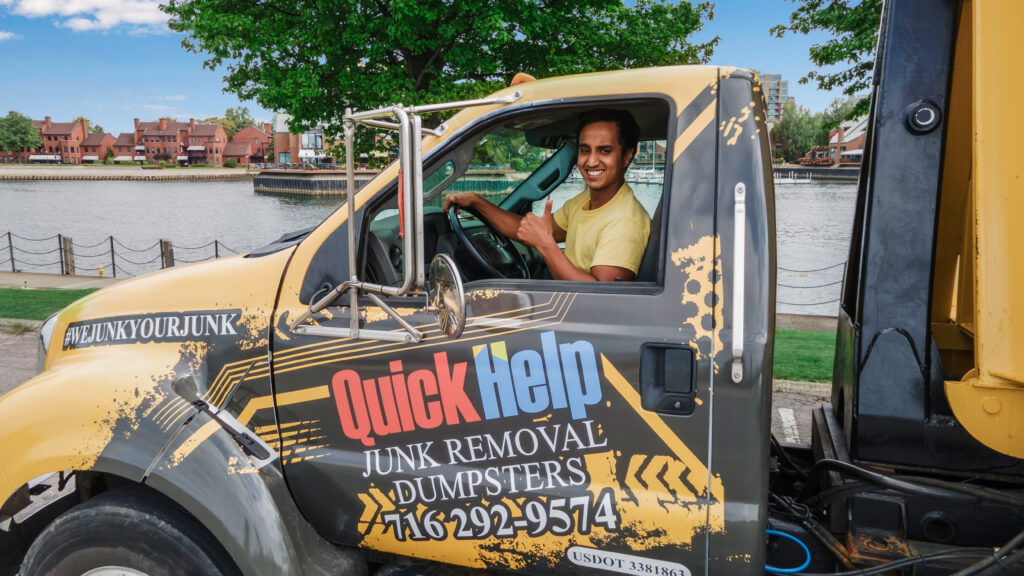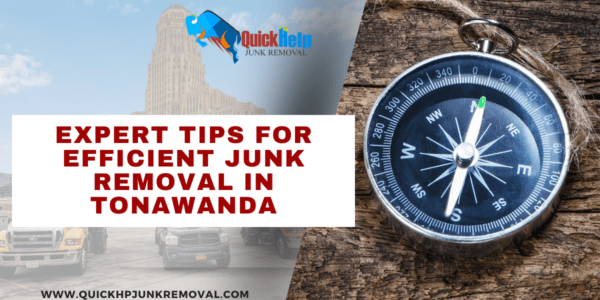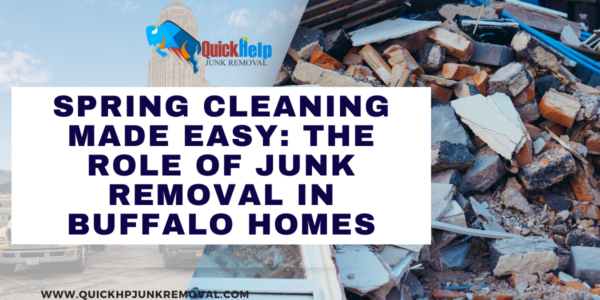Flooding can be devastating for homeowners in Buffalo. Whether caused by heavy rain, snowmelt, or plumbing failures, water damage can lead to major cleanup challenges. After the water recedes, you’re left with ruined furniture, soaked drywall, and potential mold growth. The key to restoring your home quickly is efficient junk removal—and that’s where dumpster rentals come in.
If you’re dealing with post-flood cleanup, renting a dumpster can make the process smoother and more manageable. Here’s how you can tackle the mess effectively with a dumpster rental solution.
1. Assessing Flood Damage
Before you start hauling things out, take a moment to assess the damage. Knowing what to keep and what to discard will make the cleanup more efficient.
Identifying What Needs to Be Removed
Floodwater can contaminate and destroy many household items. Check for the following:
Furniture and Mattresses – Waterlogged sofas, beds, and chairs become breeding grounds for mold.
Carpets and Rugs – Once soaked, they retain moisture and odors.
Drywall and Insulation – If water reaches your walls, you’ll likely need to cut out and replace the damaged sections.
Electronics and Appliances – Items like TVs, computers, and refrigerators can be dangerous if exposed to water.
Personal Belongings – Papers, books, and fabric items may not be salvageable after flooding.
Sorting Salvageable vs. Non-Salvageable Items
Not everything must be thrown away. Some items can be restored with proper cleaning and drying. Here’s how to decide:
Keep: Items made of metal, glass, or plastic that can be cleaned and disinfected.
Toss: Anything porous that has absorbed water, like upholstered furniture and insulation.
Consider Professional Help: Wooden furniture, artwork, and important documents might be saved with specialized restoration services.
2. Why Dumpster Rental Is the Best Clean-up Solution
Once you’ve sorted through your belongings, the next step is to get rid of damaged items quickly. Instead of making multiple trips to the landfill, renting a dumpster can make your clean-up much easier.
Convenience of On-Site Waste Disposal
No need to load up your car or truck and drive to the dump.
Keeps your curb free of clutter while you work through the clean-up.
Offers a centralized space to dispose of all waste efficiently.
Choosing the Right Dumpster Size
The amount of debris will determine the size of the dumpster you need. At Quick Help Junk Removal, we offer a variety of sizes to fit your needs:
17-yard dumpster: Perfect for smaller cleanouts (furniture, carpets, and minor drywall removal).
20-yard dumpster: Great for moderate flood damage (multiple furniture pieces, flooring, and construction debris).
26-yard dumpster: Ideal for whole-home cleanouts or large debris removal.
30-yard dumpster: Best for extreme damage, complete renovations, or major storm clean-ups.
3. Proper Disposal of Flood-Damaged Items
Not everything can go straight into the dumpster. Understanding proper disposal methods will keep your clean-up safe and legal.
What Can Go in a Dumpster?
Most household and flood-related debris can be placed in your dumpster, including:
Furniture and mattresses
Flooring materials and drywall
Wood, plaster, and metal debris
Clothing and non-hazardous personal items
What Can’t Go in a Dumpster?
Some materials require special disposal methods, such as:
Hazardous Waste: Paint, chemicals, and cleaning supplies
Electronics: Some electronics contain toxic materials and should be recycled separately
Batteries and Gasoline Containers: These are flammable and require specialized disposal
Asbestos or Mold-Infested Materials: Consult with a professional before disposing of hazardous construction debris
If you’re unsure whether an item is safe for disposal, Quick Help Junk Removal can provide guidance to ensure everything is handled correctly.
4. Safety Precautions for Post-Flood Clean-up
Flood clean-ups can expose you to mold, bacteria, and other health hazards. Here are some key safety tips to follow:
Protecting Yourself During Clean-up
Wear gloves, masks, and protective clothing to avoid direct contact with contaminated materials.
Ensure proper ventilation when working indoors to reduce mold exposure.
Use heavy-duty trash bags for smaller items to minimize dust and allergens.
Preventing Future Water Damage
Once the clean-up is complete, take steps to avoid future flood issues:
Inspect and repair gutters to ensure proper drainage.
Elevate electrical outlets and appliances in flood-prone areas.
Seal basement cracks and invest in a sump pump if necessary.
5. How Quick Help Junk Removal Can Assist You
At Quick Help Junk Removal, we understand how stressful post-flood clean-ups can be. We offer fast, reliable dumpster rentals and junk removal services in Buffalo to help you clear out debris efficiently.
Why Choose Us?
Affordable dumpster rental pricing with no hidden fees.
Flexible rental periods to give you enough time to clean up.
Eco-friendly disposal practices to reduce landfill waste.
Full-service junk removal if you need extra help hauling heavy items.
Recovering from a flood is challenging, but an efficient cleanup process can help you regain control of your home. Renting a dumpster is the best way to clear out water-damaged items quickly and safely.
If you need a dumpster rental or full-service junk removal in Buffalo, contact Quick Help Junk Removal at (716) 292-9574 or visit our website at Quick Help Junk Removal. Let us help you restore your home without the hassle!


